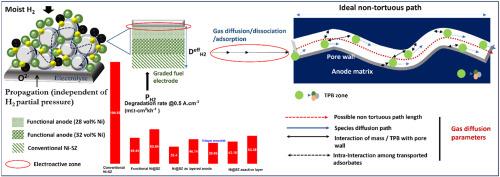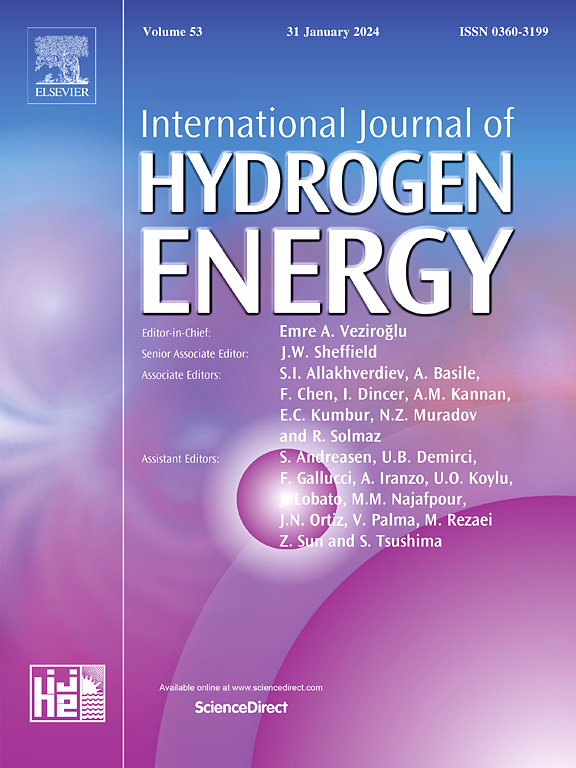Commercialization of solid oxide fuel cell (SOFC) is restricted due to long term performance degradation. SOFC is activated by diffusion of gasses through porous electrodes to the electrochemical active sites termed as triple phase boundary (TPB). Among all other parameters, tortuosity influences the functionality of TPB and is responsible for gas transport which relates its bulk diffusion and its migration through the porous electrode. The novelty of present research lies in designing of optimum tortuous gas diffusion path for effective hydrogen oxidation reaction through engineered morphology of anode functional layer. The study involves the fabrication of anode for planar SOFC using four configurations. Configuration A and B involves anode monolith synthesized through conventional route [(40 vol % Ni in dispersed-8 mol % Yttria stabilized zirconia (SZ)] and functional core-shell Ni@SZ. Configuration C (trilayer anode, TLA) is designed to have graded matrix with conventional Ni-SZ (fuel inlet side), 28 vol% Ni@SZ acting as active layer and 32 vol % Ni@SZ sandwiched in between. Configuration D consists of Ni@SZ as the active layer onto conventional Ni-SZ support. TLA is found to have minimum tortuosity (τ = 2) with maximum cell endurance for 2000 h (2.06–8.2 %/1000 h@800 °C under load). Ni@SZ with unimodal pore distribution is capable of reducing the activation barrier for charge migration (14 kJmol-1) compared to Ni-SZ (32 kJmol-1) with multimodal pores. This results in higher redox tolerance for Configuration B-D (4–7 % conductivity degradation/20 cycles) compared to Configuration A (27% conductivity degradation/20 cycles). Post mortem analyses of microstructure support the retention of core-shell morphology of Ni@SZ with lower deterioration.



